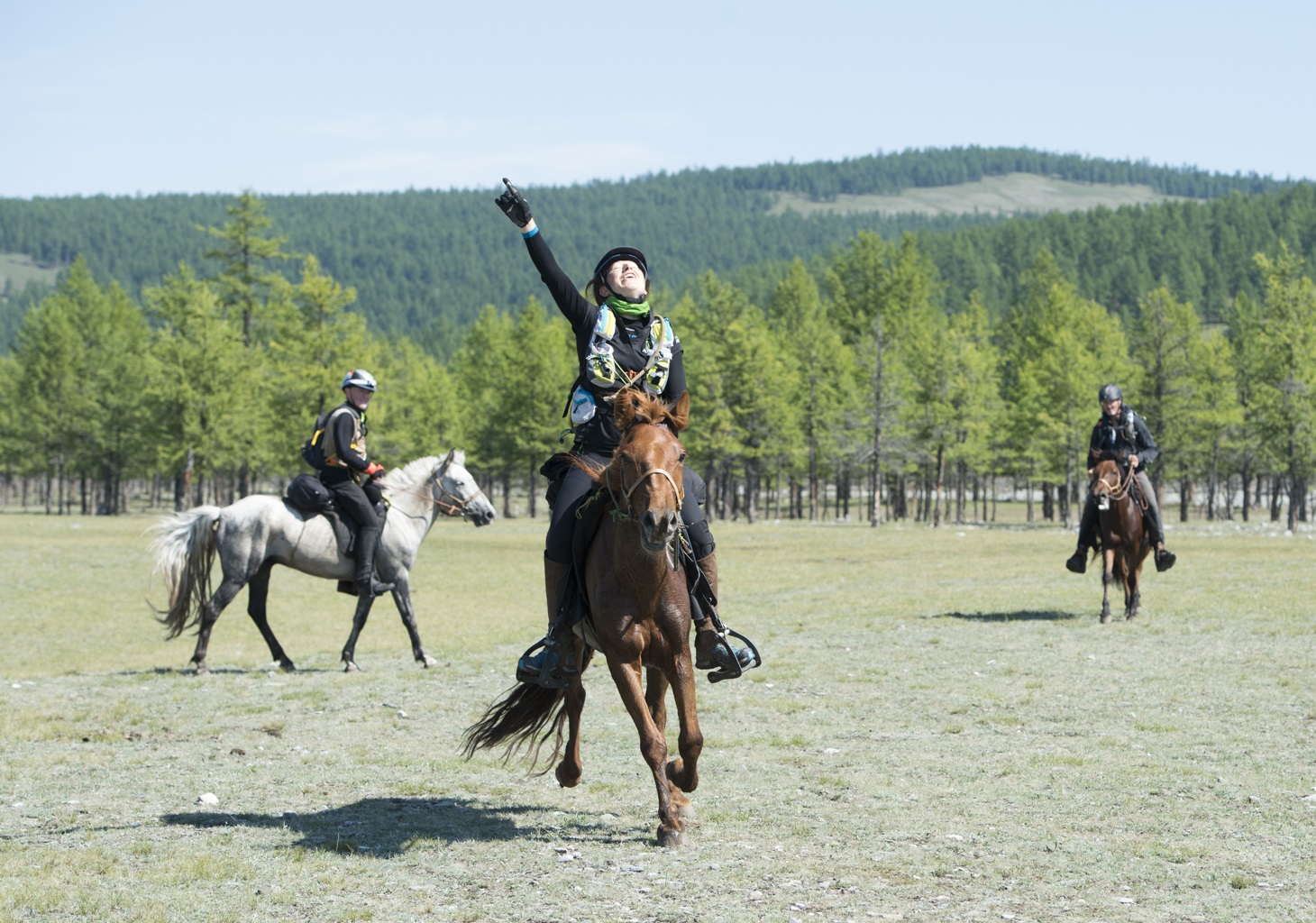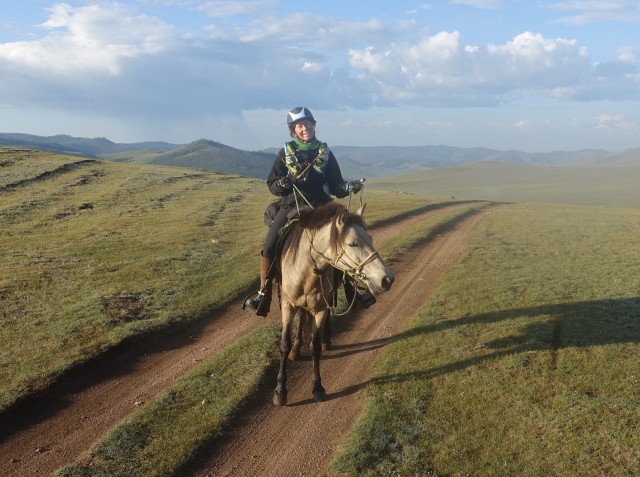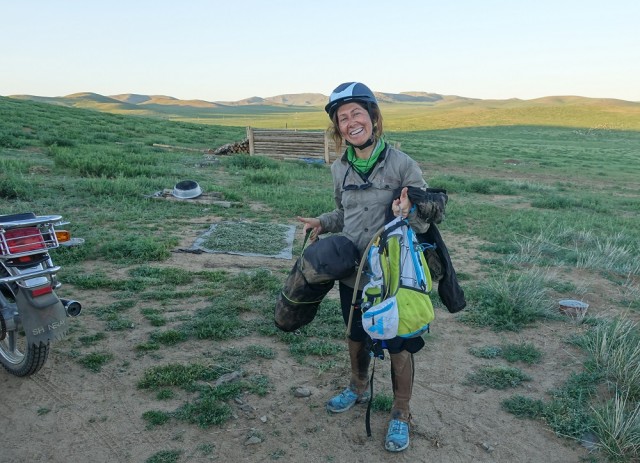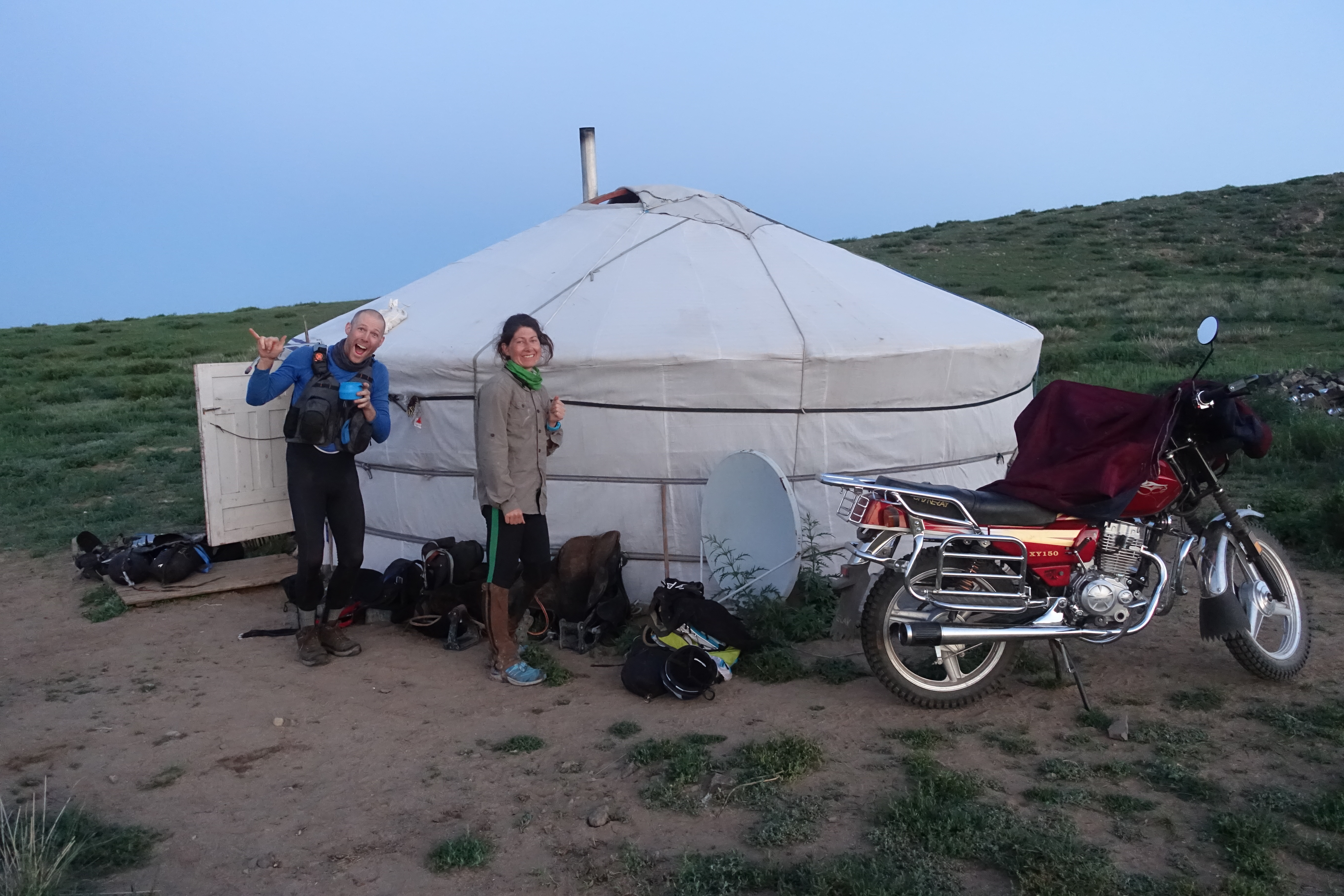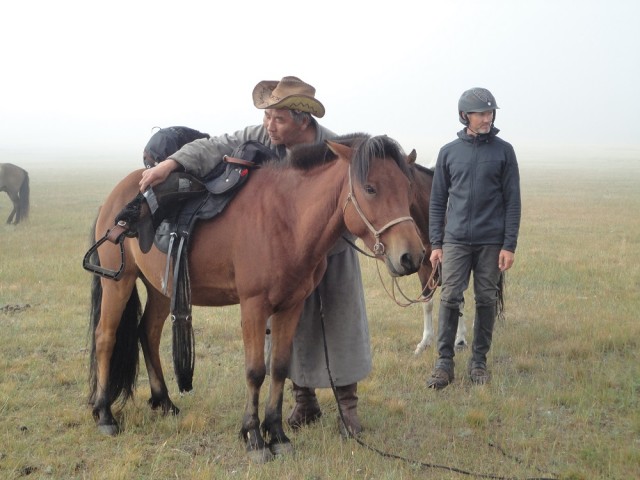In 2015 veterinary surgeon Sophie Wilford took on the toughest horse race in the world. Modelled on Chinggis Khaan’s postal route across the Mongolian steppes, the Mongol Derby, run by the crazy cats at The Adventurists, involves navigating 1000km of wild grassland with no set route and spending nights with local families in traditional gers. She tells me about the incredible people, epic landscapes and painful nether regions that made up her race.
Since I was a little girl I have been passionate about horses and books. I used to read enchanting stories about amazing horsemen and women that travelled hundreds of miles across the Mongolian steppes on their sturdy steeds.
Mongolia had therefore been on my bucket list for a while when five years ago I decided to do a ‘horses + Mongolia’ Google search. This led me to the famous Mongol Derby run by adventure challenge company The Adventurists.
At the time it didn’t cross my mind that I might ride the race myself one day but I was sure they needed vets on such a race so I decided to get in touch with them.
When did you first decide that you wanted to ride in the Derby yourself?
In August 2014 I worked as a vet on the Derby and had a ball. It was exhausting but extremely fulfilling. I loved the experience and fell in love with the country, the people and the horses. That’s when the seed was planted.
I met Sian Dyson, a medic on the team, and she watered that seed by suggesting the possibility of riding us together. We kept in touch after Mongolia and had lengthy Skype conversations about the race, fundraising and fitting training into our busy work schedules.
How did you train?
I trained hard and diligently. I set about finding an endurance yard near Paris where I could ride for long hours while standing up in my stirrups. The people there were lovely and taught me everything there was to know about endurance riding.
I was already a gym member and intensified my sessions but soon started getting severe knee problems. I knew this might be an issue so I got a personal trainer on board and saw a chiropractor. I had my left knee injected with hyaluronic acid for three weeks one month before the race and steroids one week before.
I didn’t train so much for fitness as for muscle strength to protect my knees and prepare for long hours in the saddle. And in retrospect, this was perfect training! It got me round the Derby practically unscathed.
How did you feel when you first arrived in Mongolia?
I felt like it was surreal, I couldn’t believe it. I was so excited but I also felt ready.
Can you talk me through the Derby day by day?
I could talk for hours about it, and I kept a daily diary, but mainly we followed a routine and took the race one urtuu (a distance of 35-40 km) at a time. We’d get up in the morning at around 6am, get dressed, have some food (usually broth), choose a horse with the help of an interpreter and a herder, get it ready and set off at 7am, the earliest start allowed. At the next urtuu, I’d get off, get my horse vetted, chose another horse and set off again. You could ride until 8.30pm each day. I repeated that routine until urtuu 28, the finish line.
We could choose to sleep either at a designated urtuu or with a local Mongolian family – it’s traditional for them to take you in for the night. I did that three nights in a row and it was fabulous. I couldn’t talk to my hosts but get got along great with gestures and smiles.
Who were you competing against?
I was competing against 38 other riders from all around the globe. There was a range of professional riders as well as novices eager to take on a challenge.
How did your veterinary training and knowledge of horses help you?
My veterinary actually training hindered me at first – I was too careful and didn’t realize how sturdy the little Mongolian horses were. After a couple days I realized that I could push them a lot more whilst still being careful to look after them properly, and that’s when I started having fun. My knowledge of horses and my recent endurance training really helped with the notions of speed, distances and terrain. Overall both were assets.
Any problems and pitfalls on the way?
Absolutely! I fell on day one, really hurt my head and was concussed for 48 hours. This meant that at the end of day one I was in 37th position – the last position as number 38 dropped out. I had to move up gradually and that was difficult – it meant having the last pick of horses and sometimes riding alone to make up lost time. However it also meant that I rode with many different riders along the way, which I thoroughly enjoyed.
Along the route I also encountered severe heat, severe cold and a bout of hypothermia. I chased another rider’s horse across the plains to catch it. I got stuck in a bog. My knee gave me the odd twang and I also ended up with some unpleasant sores in my nether regions requiring some serious home-made bandaging!
How do you feel now you’ve completed such an epic challenge? And would you recommend it to others?
Just answering these questions makes me feel elated and sad at the same time. Mongolia, together with its people and horses, now owns a part of me that I wish never to retrieve. I didn’t ride the Mongol Derby in search of anything special – I rode it because it’s part of my life plan to embrace beautiful opportunities. And it was everything I hoped for and more.
I would recommend the Derby to anybody who wishes to take on a personal challenge and experience life stripped down to its basics: exertion, food, water, and sleep. The ride was made very special by the beauty and kindness of the Mongolian people and their horses.
Applications for the 2016 Mongol Derby, taking place from the 1st to the 14th August, are now open. Entry costs £8495.
